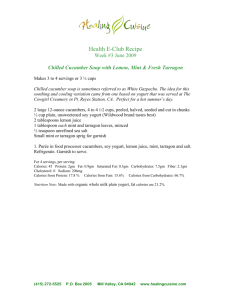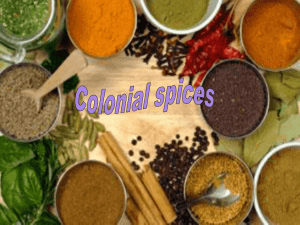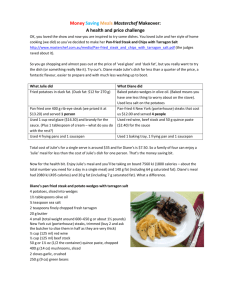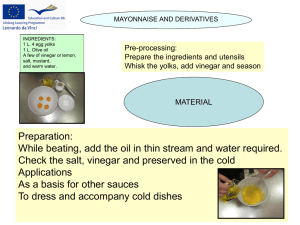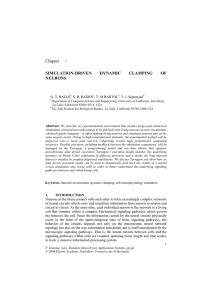TARRAGON
advertisement
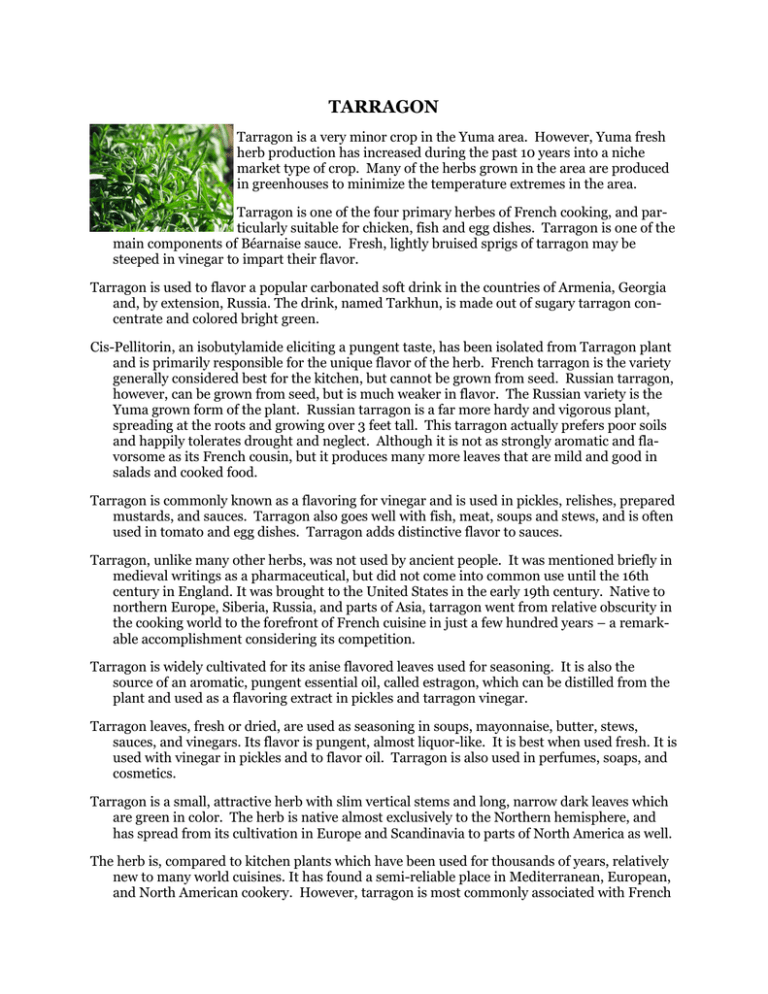
TARRAGON Tarragon is a very minor crop in the Yuma area. However, Yuma fresh herb production has increased during the past 10 years into a niche market type of crop. Many of the herbs grown in the area are produced in greenhouses to minimize the temperature extremes in the area. Tarragon is one of the four primary herbes of French cooking, and particularly suitable for chicken, fish and egg dishes. Tarragon is one of the main components of Béarnaise sauce. Fresh, lightly bruised sprigs of tarragon may be steeped in vinegar to impart their flavor. Tarragon is used to flavor a popular carbonated soft drink in the countries of Armenia, Georgia and, by extension, Russia. The drink, named Tarkhun, is made out of sugary tarragon concentrate and colored bright green. Cis-Pellitorin, an isobutylamide eliciting a pungent taste, has been isolated from Tarragon plant and is primarily responsible for the unique flavor of the herb. French tarragon is the variety generally considered best for the kitchen, but cannot be grown from seed. Russian tarragon, however, can be grown from seed, but is much weaker in flavor. The Russian variety is the Yuma grown form of the plant. Russian tarragon is a far more hardy and vigorous plant, spreading at the roots and growing over 3 feet tall. This tarragon actually prefers poor soils and happily tolerates drought and neglect. Although it is not as strongly aromatic and flavorsome as its French cousin, but it produces many more leaves that are mild and good in salads and cooked food. Tarragon is commonly known as a flavoring for vinegar and is used in pickles, relishes, prepared mustards, and sauces. Tarragon also goes well with fish, meat, soups and stews, and is often used in tomato and egg dishes. Tarragon adds distinctive flavor to sauces. Tarragon, unlike many other herbs, was not used by ancient people. It was mentioned briefly in medieval writings as a pharmaceutical, but did not come into common use until the 16th century in England. It was brought to the United States in the early 19th century. Native to northern Europe, Siberia, Russia, and parts of Asia, tarragon went from relative obscurity in the cooking world to the forefront of French cuisine in just a few hundred years – a remarkable accomplishment considering its competition. Tarragon is widely cultivated for its anise flavored leaves used for seasoning. It is also the source of an aromatic, pungent essential oil, called estragon, which can be distilled from the plant and used as a flavoring extract in pickles and tarragon vinegar. Tarragon leaves, fresh or dried, are used as seasoning in soups, mayonnaise, butter, stews, sauces, and vinegars. Its flavor is pungent, almost liquor-like. It is best when used fresh. It is used with vinegar in pickles and to flavor oil. Tarragon is also used in perfumes, soaps, and cosmetics. Tarragon is a small, attractive herb with slim vertical stems and long, narrow dark leaves which are green in color. The herb is native almost exclusively to the Northern hemisphere, and has spread from its cultivation in Europe and Scandinavia to parts of North America as well. The herb is, compared to kitchen plants which have been used for thousands of years, relatively new to many world cuisines. It has found a semi-reliable place in Mediterranean, European, and North American cookery. However, tarragon is most commonly associated with French cuisine due to its placement in an herb blend referred to as the “fine herbes” (fresh parsley, chives, chervil, and tarragon). Tarragon is also used in well known sauces such as Bearnaise and in dishes like tartare. Tarragon pairs well, when used correctly, with fish, lobster, red meats, chicken, some roasted vegetables, fresh salads, and tomatoes; dressing, marinades, soups, and vinegars can also be enhanced with a bit of tarragon. It also goes nicely with eggs – the traditional French herb omelet demonstrates this nicely. Tarragon contains a numbing compound, eugenol, which makes it a good natural remedy for minor pain-related symptoms such as toothache or sore gums (the Greeks used the herb this way). It was also classified for a time under an archaic school of medicine which claimed that certain herbs could cure ailments inflicted by animals or offenders similar to the plant. Tarragon, with its long, narrow leaves, was assumed to treat snake bites and wounds from venomous animals because it looked like fangs. There isn’t much information on how successful the treatment was, perhaps because the practitioners of this school of medicine didn’t live very long. Tarragon loses its flavor with unfortunate speed when dried – preserving in herb in vinegar is a good option for those wanting to use its essence for cooking when the leaves are unavailable. Tarragon can be stored for a short time in the fridge, but is sensitive to cold and can deteriorate quickly. Dried tarragon is less potent but can be purchased in many fine grocery stores and supermarkets. It is best to use tarragon with a light hand – the herb can easily overpower all other elements in a dish. Kurt Nolte is an area agriculture agent with the Yuma County Cooperative Extension. He can be reached at 928-726-3904.

